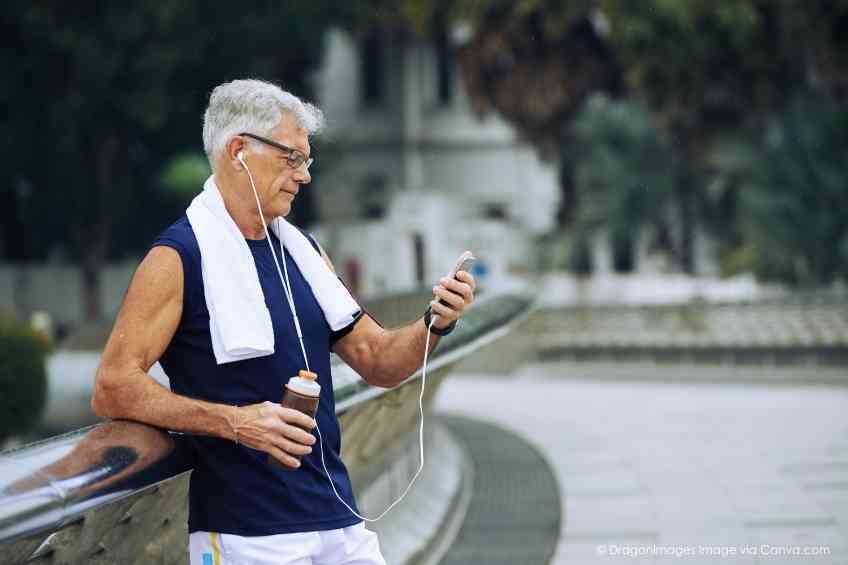By John Salak –
The power of positive thinking has been touted for almost 75 years since Dr. Norman Vincent Peale first pitched the concept with his groundbreaking book under the same title. Since then, it has been applied to all sorts of professional and personal situations. Now, however, researchers have discovered that a positive attitude toward physical activity may help people become less anxious about aging.
These insights are especially critical since during the last decade, roughly 10,000 people in the U.S. turn 65 every single day—which means America may face a building wave of anxiety over aging.
A research team from Iowa State University claims that the ability of maturing adults to reframe their internal messages on issues like gender, age, marital status and income can change their perspectives on exercise and aging, resulting in healthy behaviors. These conclusions could become critical in building proactive or preventative lifestyle measures to keep aging Americans healthy.
“As this large demographic ages, it’s really important to support health-promoting behaviors and have an approach that focuses on prevention—not just treatment—when it comes to chronic diseases. To do that, we need to know what their needs are and how best to address those needs,” says Sarah Francis, a self-proclaimed healthy aging advocate who is also a professor and Jane Armstrong Endowed Chair of Food Science and Human Nutrition at Iowa State.
She noted that anxiety over aging encompasses fears and concerns about losing autonomy and relationships, physical and psychological changes, and discomfort or lack of enjoyment being around older people.
“Previous research has shown that if you have high anxiety about aging, you have poor health outcomes. But if you view it more positively as a life stage, you have better health outcomes. You’re more likely to make lifestyle changes that benefit you in the long run,” Francis added.
The Iowa State team built its findings on data from a multi-state survey they asked mature adults about anxiety related to physical activity and other factors, like age, gender, marital status and income.
“One of the most important findings is that higher positivity about physical activity relates to lower anxiety about aging,” she noted. “Perhaps this is because the physical, mental and social benefits of staying active contribute to overall well-being and a more favorable perception of the aging process, ultimately reducing anxiety related to growing older.”
The researchers noted that evidence, especially strength training, helps older adults conserve bone mass and muscle, reduce the risk of dementia and retain motor control. Unfortunately, they added that many middle-aged and older adults face barriers to exercising that include fear of getting injured and difficulties getting to gyms.
However, any exercise, even home-based activity, can have a positive impact on a mature adult’s health, according to the British Heart Foundation (BHF). A foundation-sponsored research project, in fact, found that anything is better than simply sitting motionless all day long.
This is especially true in the global battle against cardiovascular disease, which is the number one cause of mortality globally.
Researchers at the University College of London helped the BHF examine the impact of sedentary behavior by analyzing data from six studies that encompassed more than 15,000 people from five countries. The participants each wore a device that measured their activity throughout the 24-hour day and then had their heart health measured.
The team ranked activities from time spent doing moderate-vigorous activity to light activity like standing and sleeping compared with the adverse impact of sedentary behavior. The researchers then modeled what happened when an individual changed various amounts of one behavior for another each day for a week. The results revealed that replacing sedentary behavior with as little as five minutes of moderate-vigorous activity had a noticeable effect on heart health.
“The big takeaway from our research is that while small changes to how you move can have a positive effect on heart health, intensity of movement matters. The most beneficial change we observed was replacing sitting with moderate to vigorous activity—which could be a run, a brisk walk, or stair climbing—basically any activity that raises your heart rate and makes you breathe faster, even for a minute or two,” reported Dr. Jo Blodgett, the study’s first author.
The project also revealed that while doing vigorous activity was the quickest way to improve heart health, people of all abilities benefitted even by engaging in lower-intensity activity. This could include something as simple as using a standing desk for a few hours a day instead of a sitting desk.
Ultimately, the least active individuals gained the most from upgrading their sedentary behaviors to more active ones.
“Though it may come as no surprise that becoming more active is beneficial for heart health, what’s new in this study is considering a range of behaviors across the whole 24-hour day. This approach will allow us to ultimately provide personalized recommendations to get people more active in ways that are appropriate for them,” explained Professor Mark Hamer, the study’s joint senior author.”













